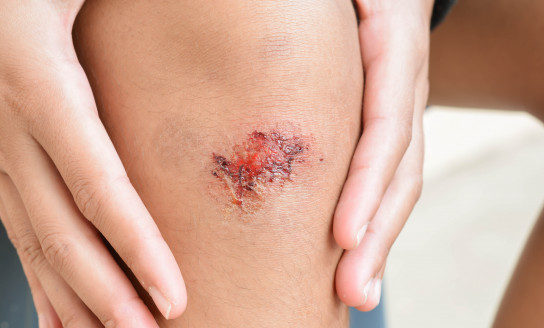Treatment at home
If your child has a small cut, or graze, you can usually treat it at home if the injury is mild:
- reassure them by speaking in a calm, soothing voice
- clean and dress the wound
- wash your hands with soap and water before touching the wound
- use direct pressure to stop bleeding
- clean the wound with warm tap water
- gently pat or dab the area dry with a clean towel or cloth
- apply antiseptic ointment (like savlon or betadine) only if the wound is dirty (don’t use for longer than two weeks)
- cover with a non-stick dressing
- keep dry for 24 hours if possible during initial healing
- replace the dressing if it gets dirty or wet
- watch for signs of infection, see your GP if there are signs present
- call PlunkeLine if you need advice or are unsure what to do.
Tetanus injection
It’s good to check your child’s medical records to make sure they’ve had a tetanus injection – especially if their wound is deep, or it’s a puncture wound. A puncture wound occurs when something penetrates layers of skin, like a knife, nail or tooth.
Your child may need another tetanus injection (booster) if it’s been more than 10 years since their last tetanus injection, or five years, if the wound is dirty, contaminated or deep.
Call your doctor to schedule a tetanus injection if you think your child may need one.
When to visit a doctor
Visit your doctor if your child has any of the following issues after you clean and dress their wound:
- any loss of feeling, numbness or inability to move the limb
- increased redness, swelling, tenderness and/or it becomes warm to touch
- red streaks develop
- a coloured or smelly discharge
- has not healed after two weeks.
Take your child to a doctor urgently if:
- the bleeding does not stop
- you can’t fully clean the wound
- the wound is deep
- you're worried
- they have a fever.
Cuts, grazes and puncture wounds
